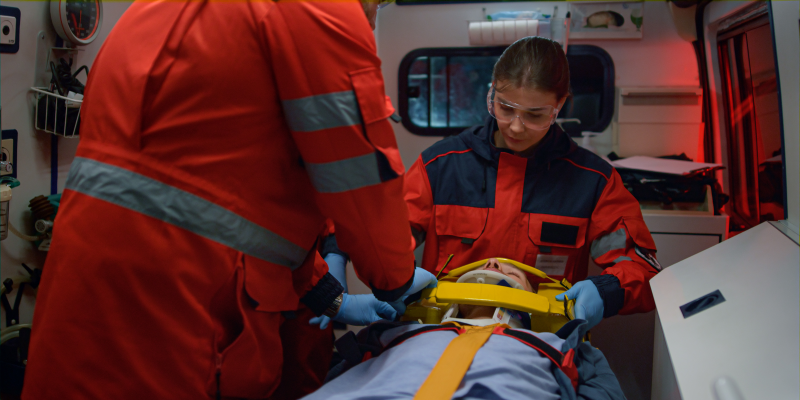
When faced with the challenge of transporting someone in respiratory distress, emergency responders should be able to identify the symptoms and remain prepared to spring into action with the right procedures and equipment.
Detecting distress
Unitek EMT describes respiratory distress, also known as acute respiratory distress syndrome, as
- Primary Respiratory Distress, meaning the problem is directly in the lungs.
- Secondary Respiratory Distress, meaning the lungs are having to work overtime to compensate for other issues in the body.
Emergency responders will be able to offer patients a better chance at survival when they arrive on the scene if they’re experts at identifying signs of respiratory distress. Johns Hopkins Medicine has identified eight key indicators to help first responders pinpoint a respiratory issue. The signs include:
- An increased number of breaths per minute
- Blue color of skin on or around the lips or fingertips
- Grunting sound on the patient’s exhale
- Nose flaring due to lack of air
- Retracting of the chest in attempt to accumulate more air
- Sweaty or clammy skin
- Wheezing with every breath
- Leaning forward while sitting to try to gain more oxygen
How to Position the Patient
According to EMS World Expo, patients should always be positioned in a way that relieves pressure from their chest and lungs. The position is formally called Fowler’s Position, but the patient should always be sitting upright. The positioning of a patient can be a life-or-death factor, so be sure to listen to the patient and take the specific circumstances of the emergency into consideration. For example, if someone is hypotensive, they should be placed completely flat on the stretcher, so the patient’s heart is not pumping against gravity.
Using the right equipment
During transport, patients with respiratory distress will often be put on a transfer ventilator. According to RT Magazine, transport ventilators are instrumental for making sure the patient has a consistent oxygen intake. RT Magazine also lays out the three different modes of ventilation. These include:
- Pressure-support ventilation augments the patient’s inconsistent inspiratory effort by providing a consistent distribution of oxygen during inspiration to a preset limit.
- Pressure-control ventilation delivers volume until the desired pressure is reached during inspiration.
- Volume control and time-limited ventilation delivers the desired air amount within a certain period.
There can be an overwhelming number of factors to keep in mind when transporting a patient in respiratory distress, but with the right preparation and knowledge, emergency responders can handle the pressure smoothly. Being able to identify the symptoms and signs of respiratory distress, knowing how to treat them and understanding how to operate necessary equipment will aid EMS professionals in smoothly and efficiently saving the lives of patients experiencing airway emergencies.














